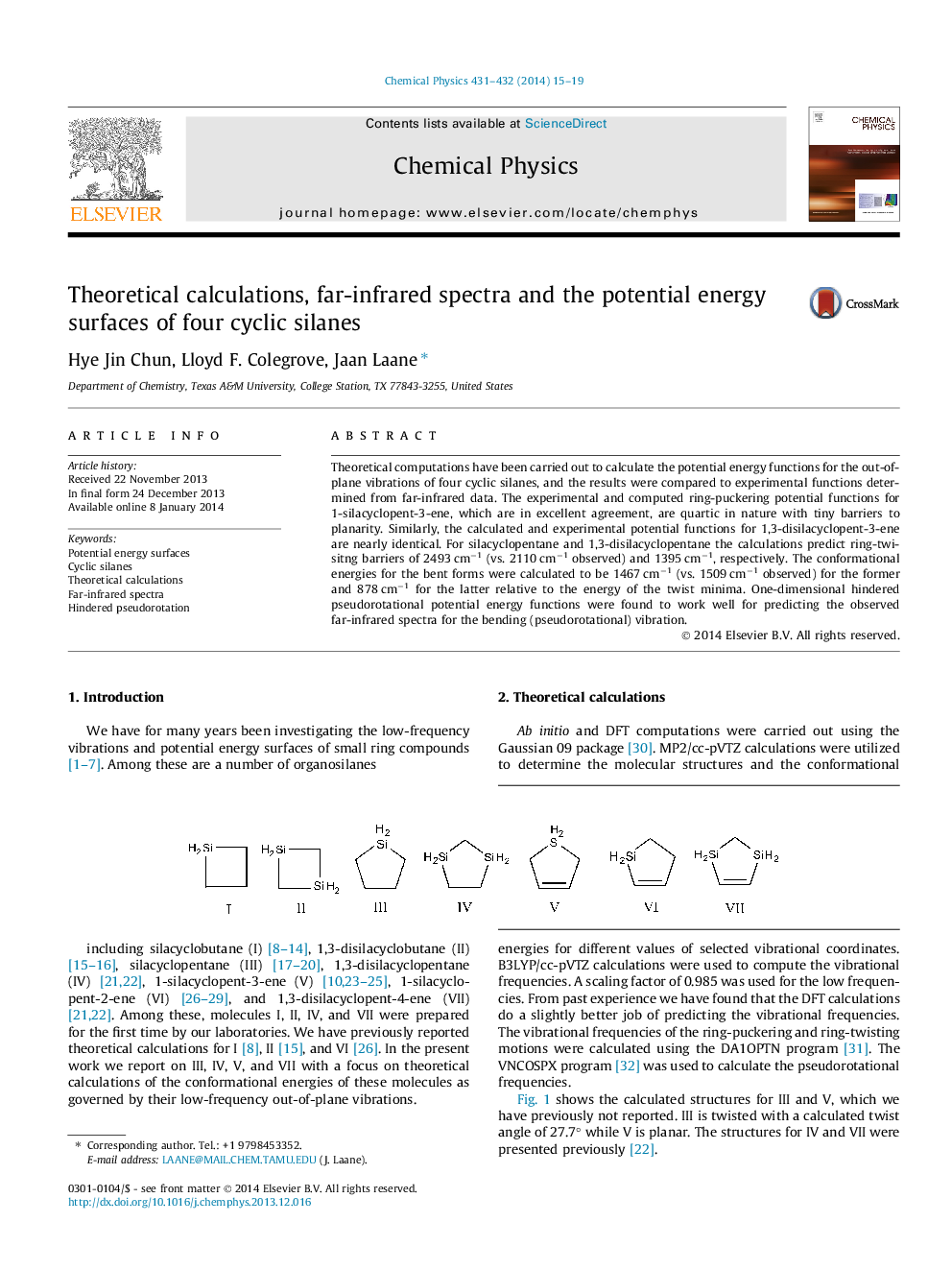| Article ID | Journal | Published Year | Pages | File Type |
|---|---|---|---|---|
| 5373664 | Chemical Physics | 2014 | 5 Pages |
â¢Ab initio calculations do an excellent job of matching experimentally determined ring-puckering potential functions.â¢The spectra for the hindered pseudorotation of two cyclic silanes were well fit with periodic potential energy functions.â¢Results from ab initio calculations are in very good agreement with experimentally determined conformational energies.
Theoretical computations have been carried out to calculate the potential energy functions for the out-of-plane vibrations of four cyclic silanes, and the results were compared to experimental functions determined from far-infrared data. The experimental and computed ring-puckering potential functions for 1-silacyclopent-3-ene, which are in excellent agreement, are quartic in nature with tiny barriers to planarity. Similarly, the calculated and experimental potential functions for 1,3-disilacyclopent-3-ene are nearly identical. For silacyclopentane and 1,3-disilacyclopentane the calculations predict ring-twisitng barriers of 2493Â cmâ1 (vs. 2110Â cmâ1 observed) and 1395Â cmâ1, respectively. The conformational energies for the bent forms were calculated to be 1467Â cmâ1 (vs. 1509Â cmâ1 observed) for the former and 878Â cmâ1 for the latter relative to the energy of the twist minima. One-dimensional hindered pseudorotational potential energy functions were found to work well for predicting the observed far-infrared spectra for the bending (pseudorotational) vibration.
Graphical abstractDownload full-size image
